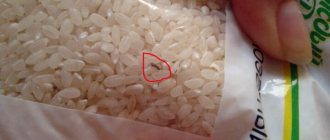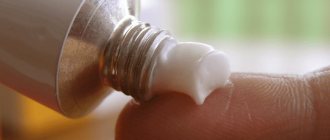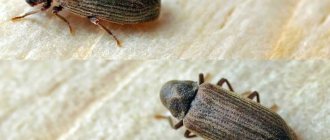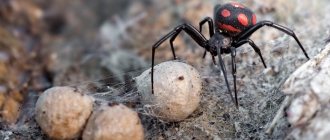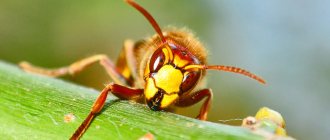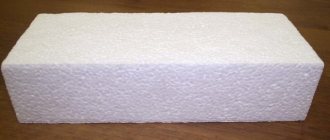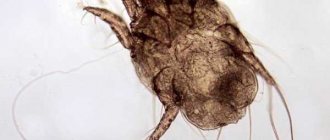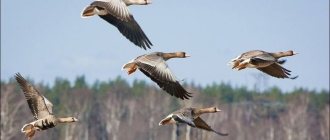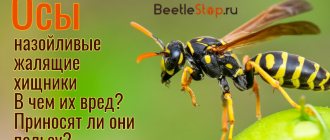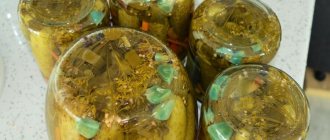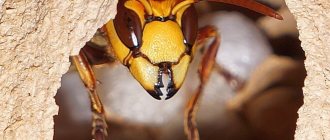December 7, 2021
We've thought of everything: the perfect couple of days in Almaty
Read November 26, 2021
I'm in Almaty, and you?
Read November 18, 2021
More please: how to save money when traveling
Read November 16, 2021
Russia resumes flights with five countries it almost never flew to before
Read November 11, 2021
The authorities want to introduce QR codes for traveling around Russia. How will it work?
Read November 8, 2021
How to have fun in Goa
Read
Paper wasps. You've probably seen their hives, which look like they were made of tissue paper, at your grandmother's in the village or on your balcony. Let's talk about how to deal with them.
What are they?
Only representatives of the group of so-called “paper wasps” sting us. These include more than 1000 different species living on the globe, including those common in Russia: the common wasp, the German wasp and the hornet. The first two are very similar to each other both in size and in black and yellow striped pattern, only the German wasp gravitates toward city life, while the common wasp prefers the countryside.
The hornet is the largest and most dangerous wasp, its “sting” is the most painful, but, fortunately, hornets are much less common.
Hornet. Photo: Shutterstock.com/ Maciej Olszewski
If wasps settled at home
Wasps prefer country life: they make nests in barns, bathhouses and attics. But sometimes you can find them in a city apartment on the balcony, especially if it is not glazed.
If the nest is large and you are afraid of wasps, then do not play hero: call exterminators and they will destroy the insects. This is the safest option - only the price can bite you: the price starts on average from two thousand rubles per trip, but depends on the size of the nest, their location and quantity, as well as the distance from the city.
If the price of specialist services is too painful, or you are determined to deal with wasps yourself, then here are some brief instructions:
- The operation is carried out in the dark, when it is cool outside. The ideal time of year to remove a nest is spring or autumn: when wasps are returning from hibernation or preparing for it. In winter, the nests are empty: the swarms sleep in tree hollows, and the “summer apartments” are left empty. If you find an empty nest in winter, simply tear it off and throw it away, and thoroughly clean the attachment site with detergent.
- Protect yourself from bites: put on thick pants and a jacket, mittens or work gloves on your hands, cover your head with a mosquito net, and protect your respiratory system with a respirator.
- Spray the nest with an insecticide in an aerosol. This could be Moskitol, Dichlorvos or another suitable product labeled “for wasps”.
- Place a tight bag without holes over the nest and carefully cut it from the base with a long knife. Tie the bag tightly.
- Place the bag in a bucket of water or burn it. If you are a supporter of humane methods, then take the package with the nest to a deserted place where people will not stumble upon it.
- Do not smoke the nest under any circumstances - the strong smell will only anger the wasps.
- Clean the place where the nest is attached from its remains and wash with a cleaning agent or soap solution, otherwise the wasps will return to the same place next year.
How to build a house?
In the spring, an overwintered female wasp wakes up (which the males fertilized in the fall) and, having found a suitable place, begins to build her own, still very small, paper nest. Having laid an egg in each cell, the mother wasp carefully looks after the larvae and feeds them until they pupate and the first worker helper wasps appear. All of them are the older sisters of the hornet's nest, who now take full responsibility for the care of subsequent offspring, since their mother (queen) will only lay eggs from now on. All worker wasps are female, and the sting is nothing more than a slightly modified ovipositor. The family begins to grow, and more and more workers emerge from the pupae. This is why paper wasps are also called social wasps. Now it becomes clear to you why the end of summer is the time for the most massive flight of wasps, because by this time all members of the wasp family reach the final stage of development (called imago).
Meanwhile, more and more wasps hatching from the larvae join the family concerns: some fly away in different directions in search of food, others expand the nest. Around the first small ball, a second, larger one appears, then a third, fourth, fifth... And only the autumn cold stops construction work.
Question answer
What should you do if your leg is very swollen after a bee sting?
Forget sharks and bears, more people around the world die from wasps and bees than from attacks by other animals. According to the U.S. Centers for Disease Control and Prevention, 90 to 100 people die from insect bites each year in the United States. They believe that this is actually a very modest number and that deaths related to heart attacks or sunstroke could also be the result of a bite that went undetected.
Americans aren't the only ones who should fear these flying killers. All over the world, wasps, hornets and bees kill people who have not been diagnosed with allergies. Some species of hornets are so large that it doesn't even matter whether you have allergies or not, because coming face to face with them almost always ends in a fight for survival. What's even worse is that during the spring and summer they can be almost anywhere.
10. Chieko Kikuchi
Photo. Wasp head
It's like a scene from a horror movie, a small 87-year-old Japanese woman named Chieko Kikuchi was riding in her wheelchair to her home on September 27, 2022. Suddenly, a swarm of giant Asian hornets began to attack her. These hornets are known to leave gaping holes in people's bodies. When passersby saw Kikuchi screaming for help and crying, they knew it was too dangerous to put themselves in danger to save her.
The nursing home worker who was with her called the fire department and even they had to retreat as a huge swarm was circling around her. The attack lasted 50 minutes and she was stung 150 times. By the time the hornets left her, the woman was taken to the hospital, but it was too late. She died the next day.
9. Acupuncture by bees
Photo. Bee sting
Actress Gwyneth Paltrow popularized bee acupuncture, which appears to be a great way to help with muscle pain. The bottom line is that using bee stings instead of regular acupuncture needles seems to somehow have better effects on the human body. Unfortunately, in 2022, a 55-year-old woman in Spain underwent one of these procedures and ended up in a coma. A few weeks later she died of multiple organ failure.
This woman had actually had several bee treatments for muscle spasms in the past and did not have any allergic reaction. Doctors studied the case and concluded that when someone is exposed to allergens, such as bee stings, over and over again, it can at some point cause a severe reaction, even if no symptoms appear immediately. They recommend that people never undergo this procedure because the risks far outweigh the intended health benefits.
8. Austin McGeough
Photo. Night highway
On a night in October 2016, a 21-year-old man named Austin McGeough had just had his wisdom teeth removed, and that same night he went to a party to drink with his friends. Mixing drugs with alcohol was not a good idea for poor McGeough, who became extremely drunk and inattentive. After a party at night, he walked down the street. He tried to find his way back, staggering in the darkness. He found his house and tried to get inside. However, he actually found the children's room, which was closed for the night.
One window was broken and covered with cardboard. McGeough reached down to pull out the cardboard and climb through the window. Unfortunately for him, there was a wasp's nest on the other side of the cardboard. The insects stung him and he was in great pain. He entered the children's room, opened the refrigerator, ate pizza and knocked over one shelf. He called his girlfriend to tell her what happened, and then dialed 911 to report that he had been badly stung by wasps and asked for help to be sent to him.
He walked along the highway, hoping to meet an ambulance. He wanted to be close to the road so he could be seen, but he stepped too far into the road and was hit by a car. His body was thrown into the opposite lane with oncoming traffic and two more cars passed over him. If it weren't for the wasps, he would have simply eaten the pizza and gone to sleep, but things turned out differently.
7. Desiree Pell
Photo. Water barrel
Disere Pell, 78, was a sweet great-grandmother simply working in her garden in Lincolnshire, England, in August 2017. She suspected that there might be a wasp's nest inside the tree trunk and when she bent down to look inside she was stung on her finger. Her sister-in-law, a woman named Sharon, was in the house at the time and went to get the patch. Desiree then passed out. Sharon dialed emergency services and attempted to resuscitate Desiree by performing CPR on her. By the time doctors arrived, it was already too late.
Pell's family said she never knew she was allergic to wasp and bee stings. Medical experts said if she had an EpiPen, it could have saved her life. Her family was devastated by the sudden loss of their grandmother, saying she was incredibly loving and supportive of them all and a special addition to their lives.
6. Warren Brown
Photo. Wasps and their honeycombs
In November 2015, Warren Brown and some of his friends were spending the weekend camping in Washington state. It was already late, so he started chopping wood to start a fire. He had no idea that one of the logs he was working on was home to a giant nest of hornets. When the insects were disturbed, they began to swarm, stinging him dozens of times. Some of his friends were nearby and called for medical help from the tent city. They didn't have an EpiPen on hand and Brown died when he was 60 years old.
Even if someone was stung by a wasp or bee as a child and did not show signs of an allergic reaction, this does not mean that their body will remain that way for the rest of their life. Allergic reactions in adults are very real. As people age, they become allergic to new foods, plants and animals, making it more important to get tested after a certain number of years.
5. 41 people
Photo. Holes from Asian hornet bites
Allergy sufferers don't just fear Asian giant hornets, they are so large and deadly that they can kill anyone. In just three months in 2013, a swarm of hornets killed 41 people and stung 1,600 in Ankang, China. The venom of these hornets is so strong that it can kill people who are not even allergic to insects. The venom dissolves human tissue, leaving gaping holes in the flesh large enough to see inside.
A man was picking vegetables in a field when he stepped on a nest of Asian giant hornets (Vespa mandarinia) hidden under the dirt. All the workers began to run and tried to drive the insects away from them. One of the surviving men said he grabbed a basket, threw out the vegetables and covered his head with it so they couldn't bite him in the eyes. He witnessed the death of one of his friends.
One Ankang citizen said of the hornets: “God has been unfair to us.” The local fire department began setting fire to the nests with a flamethrower in an attempt to stop the incursion.
4. Alex Bestler
Photo. hive
On a morning in May 2016, Alex Bestler and his girlfriend named Sonia went hiking in a park in Arizona. Without warning, a huge cloud of thousands of bees attacked the couple. They didn't see the hive and didn't try to provoke the bees, but they were attacked anyway. Sonya was several meters ahead, so when she heard Alex's screams, she turned around to see the bees attacking him, she was able to run to the toilet in the park. She told someone else in the park about the bees and the stranger boldly went to save Alex.
By the time they got there, they saw that Alex was lying on the ground, unconscious, with a dark swarm of several thousand insects all over his body. Local firefighters arrived in protective gear. They lifted Alex into the car and drove off with the bees following them. Alex died in the hospital. Local authorities closed the park to prevent further deaths. They said they blamed the attack on a human-bred Africanized bee, also known as a killer bee, which is known for its aggressive behavior.
3. Winnipeg Hornets
Photo. Canadian city
When one thinks of Winnipeg, Canada, they probably think of a cold winter rather than a deadly swarm of insects. But it turns out that as the climate continues to change, wildlife is also adapting. In the summer of 2022, the city reported three deaths due to hornets, which was the highest number in the last 15 years.
Even for those who survived hornet stings, the situation has not changed. One woman named Katherine Singer was stung in the leg. Her leg began to swell like a balloon. She was very lucky because she already had an EpiPen in her purse. When she had an unexpected reaction to hornet venom, she was able to save her life. She was taken to the hospital where she was treated. City officials began making announcements to their citizens that if they saw a hornet nest, they should try to destroy them at night.
2. Eric Dahl
Photo. Pit in the garden
In 2022, a man named Eric Dahl was raking leaves in his backyard in Foxborough, Massachusetts, when he came across an underground nest filled with wasps. The insects swarmed around him and he was stung. Dahl had been stung before and didn't think he had an allergy. But the sheer number of bites he received after disturbing the nest was so shocking to his body that he suffered a heart attack.
For some reason, the local news station blamed his death on bees. However, bees almost never harm humans unless provoked. They are also important to our ecosystem.
However, wasps and killer bees are much more aggressive and dangerous. Anyone who owns property should seriously consider looking for any signs of wasp nests and calling an exterminator or finding your own way to get rid of them.
1. Pixie puppies
Photo. Lots of bees
In March 2022, three puppies died as a result of bee attacks. In Glendale, Arizona, a woman named Esther Julian was at home with her young children, her dog Pixie, and six small puppies. Their yard was filled with bags of trash and open soda cans, attracting an estimated 30,000 killer bees. During the colder months, this shouldn't have been a problem, but as the spring weather warmed up, the family didn't notice a growing number of bees around their trash.
The family went into the backyard to play with the puppies and were suddenly surrounded by thousands of bees. Julian and her one-year-old daughter were stung, and the woman struggled to get all the puppies out. One of the six puppies was not found. Julian rushed her five puppies to the vet, all of whom received injections to save them from bee stings. Unfortunately, two puppies succumbed to the poison.
This entry was published on Thursday, April 5, 2022 - 11:41 am. You can leave a comment.
What do they eat?
Social wasps (unlike those living alone and, as a rule, hunting) are vegetarians and feed exclusively on liquid food: sweet nectar or plant juice, which is why they are so drawn to your jam and sweet compotes. But their larvae are fed protein foods, for which they catch various insects and do not even disdain carrion. Therefore, do not be surprised by wasps gnawing off a piece of fish or meat on your table. The larvae are very voracious: as soon as they begin to feel hungry, they immediately scratch loudly with their jaws on the paper walls of the wasp house; This is a signal - “I want to eat”! Caring sisters immediately rush to satisfy the hunger of the younger generation. Their relationship with ants is interesting. Sometimes real wars break out between different types of insects, with the result that the winner takes the prey.
Germanic wasp. Photo: Shutterstock.com/ Melinda Fawver
Consequences of a wasp sting: what is the danger?
Reactions to a wasp sting vary from person to person, ranging from painful sensations at the site of the sting to severe allergic reactions and death. About 1-2% of people develop complications that are fatal . Most often this occurs as a result of suffocation, which in turn occurs when wasps sting in the area of the face, head and neck. Bites to these areas of the body are most dangerous to human life and health.
The most initial manifestations after a sting:
- sharp pain
- burning,
- redness,
- edema.
Such symptoms may subside within a few hours. In this case, there is no reason to worry. At the same time, to relieve symptoms, you can additionally use creams against insect bites, apply ice or chilled objects. All this will help alleviate pain, remove redness and itching.
However, things don't always work out so well. If the swelling only intensifies over time, and the itching spreads throughout the body, then you need to sound the alarm : an allergic reaction is developing. Associated signs of so-called anaphylactic shock are as follows:
- Irregular (increased or slow) heartbeat.
- Labored breathing.
- Hoarseness of voice, hoarseness.
- Headaches, dizziness, loss of consciousness.
- Attacks of nausea and vomiting.
If such symptoms appear, an urgent call to the ambulance is mandatory!
Why do they sting?
First of all, defending against the enemy or defending your nest. Unlike a bee, a wasp stings repeatedly. Its poison is not only a strong allergen that causes a reaction (from swelling to death), but also an attack pheromone. The smell of the very first dose used acts like a war bugle - a signal to attack for the whole family. That's why you need to be careful around the nest itself.
The risk of aggression increases many times over:
- the smell of perfume (“sweet” perfume or cologne) and makeup (it contains cosmetic fragrances);
- bright clothes;
- sudden movements of people, which are perceived as an attempt to harm the nest;
- a fear hormone that insects also sense and become even more irritated.
By the way
Make sure that wasps do not get into food or drink - desserts or compotes. A swallowed insect can sting a person in the mouth or esophagus, sometimes leading to suffocation.
Features of OS behavior
Wasps are very similar to their relatives - bees. They are also covered with black and yellow stripes and have two pairs of wings. However, in nature there are many different types of wasps, whose coloring sometimes varies from brownish-black to bright red or yellow. These insects are widely known not so much because of their “wasp” waist, but because of their very painful and dangerous bites. Like a bee, a wasp painfully bites its opponent, but does not lose its sting. This insect is very often aggressive. Therefore, if danger approaches, it will attack first.
Wasps become most aggressive during the period when there is a lot of food around, especially sweet fruits. In addition, heat greatly affects their increased arousal. And at the end of summer and beginning of autumn, not only the “viciousness” of wasps increases, but also their number. Therefore, on such days you need to be extremely careful so as not to feel the consequences of dangerous bites.
First aid for a bite:
- take an antihistamine;
- if the sting remains in the skin, be sure to remove it; Before this procedure, disinfect the instrument and wash your hands thoroughly;
- treat the bite site with an acidic solution - vinegar or lemon juice, since the acid neutralizes wasp venom;
- after treatment with acid, use an antiseptic so that when combing the wound it does not get infected;
- apply something cold to the sore spot - low temperature will reduce pain and swelling;
- Do not drink alcohol - it will only worsen the condition.
Don't let yourself get bitten. How dangerous are mosquitoes and how to get rid of them? More details
What to do depending on the location of the bite?
A wasp can sting any part of the body. First aid will vary slightly depending on where the affected area is:
- the wasp has bitten the lip or tongue - the victim should take an antihistamine, you can let him suck on ice;
- if a wasp stings your eye, you should apply a napkin moistened with cold water, but it is better not to use ice, so as not to chill the facial nerve;
- If you are bitten on the neck, you should immediately take an antihistamine.
The most dangerous are wasp bites to the eye, neck, and tongue. In this case, you should immediately consult a doctor.
Ground wasps - how to get rid of insects in your summer cottage
The surest way to get rid of earthen wasps on your property is to call a specialist. After treatment, the problem will be solved for a long time. But if the wasp nest is small, you can get rid of the insects yourself.
- Wasps cannot tolerate the smell of petroleum products. If possible, douse the nest and the soil around it with diesel fuel. This must be done carefully so as not to anger the inhabitants of the nest.
- Another way to get rid of wasps in the country is to pour poison or gasoline into the sprayer. The contents are carefully sprayed near the nest. The surviving wasps will still leave this place forever.
- The nest can simply be burned, but this must be done in the fall, when there is no one left alive except the queen. The place where their home was located needs to be treated with chemicals.
- Ground wasps will die from exposure to various powders and gels. The chemical is poured near the nest, applied to the bait, and the insects themselves will carry the insecticide into their abode. Then all that remains is to get rid of the nest.
What means can effectively get rid of annoying insects without negatively affecting people’s health?
How to protect your home from wasps
Wasps and hornets are attracted to sweets, open food, and strong-smelling perfumes, so you should definitely install mosquito nets on your windows. Do not leave sweets, pies or sugar on the table or nightstands. You can also put a mesh on all cracks and ventilation shafts. The smell of vinegar and the drug “SOCHVA” with the smell of smoke repels insects. Wasps will fly around the windows if the curtains on them are sprayed with a solution of food vinegar. After half an hour, a person will no longer feel the smell, and insects have a keen sense of smell, vinegar will definitely scare them away.
If wasps have already settled in the neighborhood, then it’s time to act more harshly.
What a wasp looks like - photo
There are about twenty thousand species of wasps all over the world, differing in color, body shape, type of housing construction, size and degree of aggressiveness. In addition to being aggressive stinging insects, wasps are known for the distinctive construction of their nests, which look like paper jugs. It should be noted that the types of nests are quite different. For example, there are open nests, with honeycombs, and there are closed ones. Some Hymenoptera prefer to build nests in hollow walls and other inaccessible places. It is in such cases that we can say that there are wasps, but where they are flying from is unknown.
A wasp nest can be found in a barn or garage.
Wasps can also take shelter under the roof of a house, on a tree, in the corners of terraces and other similar secluded places. Sometimes the nest consists of honeycombs fastened together.
The body of the average wasp (16-21 mm) is black, with a yellow pattern on the head and chest.
Common wasps nest in the ground, for example in burrows abandoned by rodents. They are even able to expand their home to a significant size, so that more than one thousand individuals can live in it. Their length is 13-19 mm.
Below you can see a closed wasp nest in the ground, which was apparently destroyed by a forest animal.
Hornets prefer to live in hollow trees, in birdhouses, under roofs and in the ground. Hornets are much larger than wasps; working individuals have a body 22 mm long, and females up to 35 mm. Their color is brownish with a yellow pattern on the head and abdomen, the tint of the wings is yellowish.
Wasps in a house or country house are found on the surface of old buildings and fences, where they scrape off wood, which they use to build nests.
Hornets love tree bark.
When building a nest, the female first creates a cell in which she lays eggs; it turns out that along the edges of the nest there are cells in which one egg lies.
Wasps feed on meat, insects, fish, berries and tree fruits. They chew off pieces of food and feed them to the larvae.
Having gotten to know wasps better, it becomes clear that they should be quite comfortable in nature. Then why do they fly into houses and apartments?
Why do you dream about wasp stings?
Some people see how a wasp bites not only in reality, but also in dreams. Many dream books interpret differently the meaning of dreams in which these aggressive insects are present.
Most often, a wasp seen in a dream indicates the presence of an ill-wisher in a person’s close circle, who will certainly try to “sting” him.
If you see biting wasps in a dream, then the possible meanings may be as follows. Hasse's Dream Book warns of unexpected separation from loved ones, the Housewife's Dream Book warns of a sudden attack, and the Esoteric Dream Book warns of unexpected complications.
Any of the proposed interpretations explains quite simply and clearly what the dream is about. Wasps bite in a dream - this is definitely not good. However, there are other options. For example, if in a dream a person kills a wasp, then in real life he will face victory over his enemies.
How to treat the affected area
In case of severe itching, you can apply grated raw potatoes to the wound. – Fresh celery juice mixed with a little wine vinegar will help relieve itching. – You can use compresses made from pharmaceutical alcohol or pure distillate. – Apply the cut onion and leave for 15 minutes. This vegetable will secrete juice, which, penetrating into the irritated area, will relieve swelling and itching. – Calendula essential oil has a calming effect. – Lemon juice helps eliminate swelling. – The wound can be treated with a banana. To do this, you need to steam it, peel it and cool it. Then mash with a fork until it becomes a thick jelly and rub the bite area with it. – Apply a handkerchief soaked in vinegar for half an hour.
Folk remedies
Symptoms disappear completely within a week. All this time the sore spot hurts and itches. To speed up tissue regeneration, folk remedies are used. They are also used if it is not possible to treat the wound with professional antiseptics.
- Baking soda. Making pasta. Add a little water, mix, apply to the bite area until dry.
- Laundry soap. Foam should be applied to the bite. Leave for 5 minutes.
- Plant juices. Celandine, dandelion, plantain, and aloe vera are used.
- Toothpaste. For medicinal purposes, a hygiene product with menthol is used. Leave on skin for 5 minutes. Instead of paste, use shaving foam.
- Onion. Squeeze out the juice or apply the paste to the sore spot. The product neutralizes poison and prevents infection.
On a note!
The juices of potatoes, carrots, beets, lemon, and grapefruit have anti-inflammatory properties. They make compresses, lotions, and simply wipe the wound.
Lotions to relieve puffiness
The bite site can be treated with parsley juice to relieve inflammation and reduce swelling. To do this, the greens are washed and finely chopped. Then knead it with a pestle or regular spoon to make a paste. It is wrapped in gauze and the juice is squeezed out. A piece of cotton wool is moistened in it and applied to the wound. The lotion is changed every 3 hours.
Tip: Do not use wooden utensils to mash parsley, as the material quickly absorbs liquid.
To reduce swelling, use an alcohol tincture of calendula. Soak a cloth in undiluted liquid and apply it to the bite site as a compress for half an hour. Then rub an ointment of 50 ml of water, 30 g of baking soda and 1 tbsp into the affected area. l. calendula tinctures.
Mint helps reduce itching after a wasp sting. The leaves, mashed with a spoon, are applied as a lotion to the wound and secured with a bandage. After 2-3 hours it is replaced with a fresh one. Mint soothes irritation and helps relieve inflammation and redness.
Sour fruits
If there is no means at home to anoint wasp stings, fruits with sour pulp that neutralize toxins are used for treatment. Lemon juice effectively eliminates swelling and itching. The fruit is cut into slices and applied to the wound. For the same purpose, lotions are made with fresh lemon juice.
You can replace lemon with sour varieties of apples. The fruit is cut in half and massaged into the skin on the affected area. Another option for use is apple pulp lotion. For it, the fruit is grated or mashed in a blender. Then the paste is applied to the damaged area and secured with a bandage. This treatment eliminates swelling within three days.
Garlic pulp
To quickly cure swelling and relieve redness, use garlic. The vegetable has a bactericidal effect and relieves inflammation. Several cloves are peeled from the films and finely chopped, or passed through a press. The resulting pulp should be applied to the areas of the skin around the wound. Then the lotion is fixed with a bandage and left for 2 hours. In the first minutes, a burning sensation is felt, but the discomfort soon passes. You can replace garlic with onions. These vegetables have very pungent juice. Therefore, there is no need to apply the paste directly to the wound.
Potatoes and tomatoes
Wounds from stinging insect bites quickly heal if a paste of tomato pulp is applied to them. Vegetables are used ripe or green. In this case, unripe fruits are not ground, but simply cut into slices and applied to the affected area, secured with a bandage.
To relieve redness and reduce swelling, use raw potatoes. The fruit, peeled, is grated or ground in a blender until mushy. Then the resulting pulp is wrapped in several layers of gauze and applied to the wound for 1 hour.
How to help at home?
If there are no medicines at hand, folk remedies that can be found in every home can help. By the way, natural remedies will also come in handy if a wasp has bitten a pregnant woman, for whom the list of approved medications is very limited. More often than others, the following are used to treat the bite site:
- aloe juice or pulp;
- a slurry of soda mixed with water;
- sour fruit (lemon, sour blocks);
- diluted apple cider vinegar;
- tomato pulp (both ripe and green);
- grated fresh potatoes.
Grated potatoes
Some housewives advise adding chopped onion or garlic, but the juice of these plants is very caustic, so the method is not suitable for everyone. In particular, such lotions are not recommended for treating wasp stings during pregnancy

